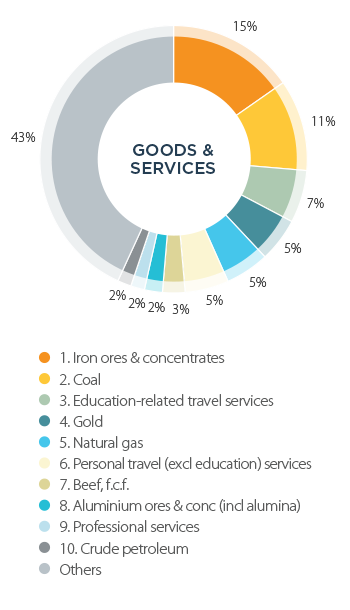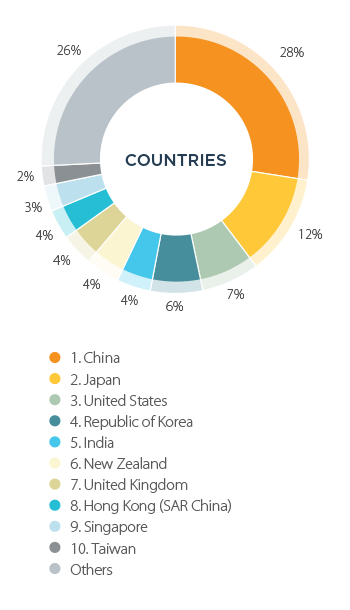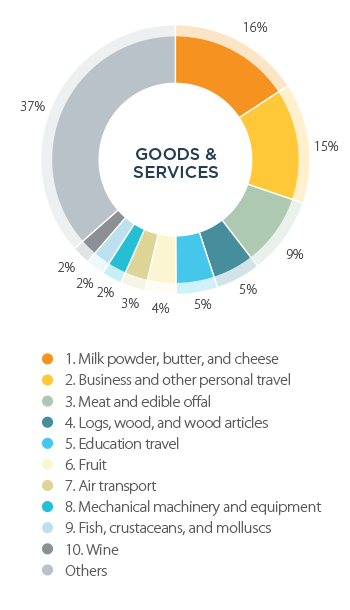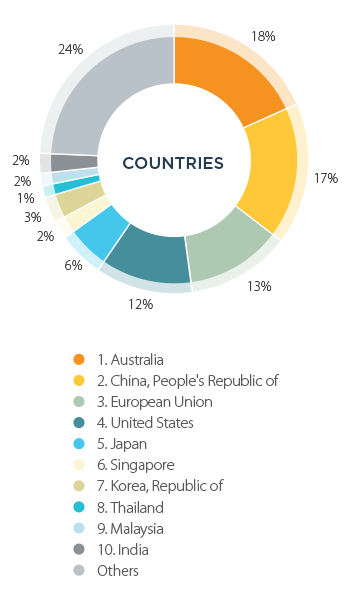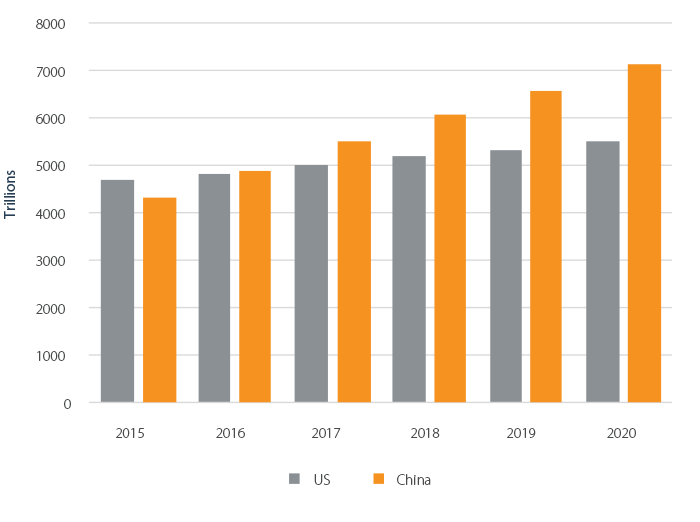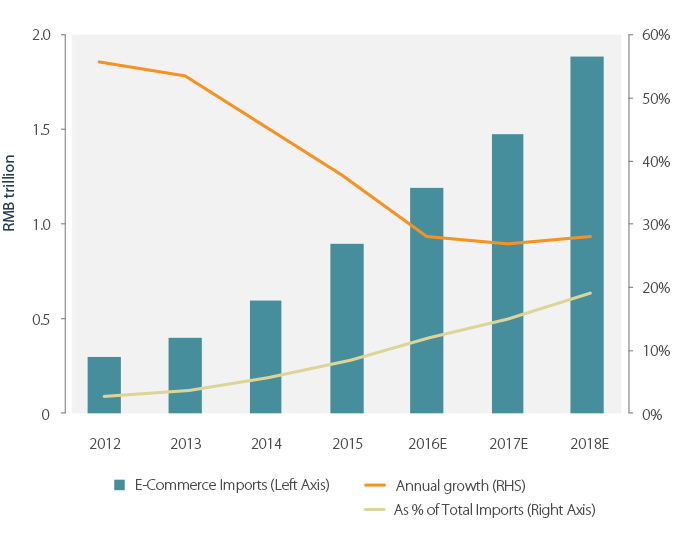INSIGHT
Cross-border Transactions in a 'Post-global' World - No Need to Panic
Download the PDF
By Mark Evans, Managing Director, Transaction Banking, ANZ | March, 2017
First article of the 'Crossing Borders' series
________
For the many businesses in Australia and New Zealand whose operations depend on the unimpeded flow of transactions and capital across international borders, it’s a difficult time to be optimistic.
Donald Trump’s US presidency is cementing a more protectionist approach to trade in the world’s largest economy. He’s promised to impose punitive tariffs on some imports into the United States and has pulled the country out of the Trans-Pacific Partnership (TPP), an ambitious “next-generation” pact designed to tackle the complications of cross-border commerce. Furthermore, Brexit has called the integration of Europe — and Europe’s future relationships with its trading partners — into question.
China, meanwhile, has introduced stringent capital controls to stop a tide of money from leaving the country. And in their efforts to crack down on financial crimes and tax evasion, regulators worldwide are subjecting international transactions to ever-higher levels of scrutiny. That implies limited progress on one of the biggest issues affecting our customers trading internationally — onerous and disparate financial regulation, particularly the processes that need to accompany the cross-border movements of funds.
Advocates of freewheeling, globalised commerce suddenly find themselves on the back foot.
Let's not panic
We have clearly entered a period of heightened volatility and uncertainty, and in a potentially higher-tariff environment companies doing business internationally would be well advised to examine their supply chains, as well as reassess their cross-border cash management processes (see box for some of our key recommendations).
That being said, they should also avoid the tendency to over-react to alarmist news headlines. As my colleague Richard Yetsenga astutely pointed out in a recent article on the topic, President Trump doesn’t have the ability to completely turn the global tide. The commercial realities driving globalised commerce are still in force, and in the Asia-Pacific at least, governments are still committed to policies that reflect this.
Have you got a Plan B?
It’s not the end of the world, but Australian and New Zealand businesses that rely on cross-border commerce — and especially those exporting to the US or operating in supply chains involving that market — would do well to ensure they are prepared for any eventuality in the “post-global” environment. Companies setting up a robust “Plan B” should consider the following:
Diversifying supply chains
Those whose supply chains depend heavily on countries likely to be embroiled in trade disputes — such as China — should consider diversifying suppliers and production sites to minimise concentration risk and the possible fallout from additional tariffs or sanctions.
Managing exchange rate volatility
Exchange rates are almost certain to be more volatile as trade and capital flows adjust to new realities — including tightening US monetary policy. Companies should review their hedging strategies, as well as cross-border payables and receivables timing, to minimise the impact of adverse currency movements.
Improving visibility and control over cash balances
As in China in recent months, instability can result in new exchange controls that hamper international remittances, making it more important for companies to monitor cash positions abroad and have plans in place to cope with “trapped cash”. Meanwhile, more complex supply chains and greater currency volatility will make having a clear view on cash positions, and the tools and processes in place to manage them efficiently, even more crucial.
For one thing, the TPP itself isn’t necessarily dead. Australia and New Zealand have already voiced their commitment to proceeding with a “TPP 12 Minus One”. The feasibility of this is still to be tested, but there are plenty of Asia-Pacific governments that remain committed to multilateral trade deals.
If the TPP can’t be saved — and remember, since it was not yet in force its demise won’t actually hit ongoing business — the China and ASEAN-backed Regional Comprehensive Economic Partnership could in some respects prove a worthy replacement. Alongside multilateral trade negotiations, governments will also strike mutually beneficial bilateral deals.
Companies headquartered in Australia and New Zealand and operating in Asia can take heart that they are based in arguably the most dynamic and trade-positive region in the world. Having based its development in part on free and open trade, Asia is extremely unlikely to turn its back on it. A Trump presidency or European breakdown would do little to shift the trend towards greater integration that has taken shape in Asia, or steadily rising inter-regional investment.
The more things change…
Then there are the realities of supply and demand in the region. Yes, China is going through a major structural shift, but its appetite for Australia and New Zealand-sourced commodities will ensure regional trade and transaction volumes remain robust.
AUSTRALIA TRADE DATA
Source: Australian Government | Notes: : See explanatory notes on DFAT website
In fact, the growing wealth of China’s middle class means the demand for higher-quality agricultural imports will likely soar, as will the demand for higher-value services like education and tourism. These trends will be reinforced by the structural adjustment away from manufacturing and investment and towards consumption.
More broadly, the talk around nationalist trade and industrial policies is also contradicted by what’s been happening on the ground with the phenomenal expansion of cross-border digital services. E-commerce has created a genuinely borderless marketplace that is increasingly supported by next-generation payment systems. Some of the disruptive ideas these systems have generated will have significant implications for banking more generally, bringing more speed and efficiency to international transactions (we’ll be analysing these developments in more detail later on in this series).
It is here in Asia that much of the explosive growth of global digital trade is rooted (along with payments innovation). Regardless of the superficial appeal of political campaigns to “buy local”, convincing people not to jump on eBay or Alibaba to source from lower-cost destinations is likely an impossible task. Chinese consumers, meanwhile, already the world’s likeliest to shop online, are increasingly going to buy digitally from the rest of the world too.
FIGURE 3
Total Retail Sales in China and the US, 2015-2020
Source: emarketer.com
FIGURE 4
China: Online Sales of Imported Goods, 2012-2018E
Source: fungglobalretailtech.com
Keeping it going
The Asia-Pacific region will therefore remain a relative bright spot in what may be occasionally troubling times. Of course, this isn’t to ignore the reality that cross-border transactions are still much more problematic than they might be. Despite the prevailing political sentiment, it is our hope that regional regulators will continue to seek harmonisation in bodies like the Asia-Pacific Economic Cooperation (APEC), not retreat into a more protectionist posture. As many regulators have already realised, a relatively open approach to international transactions is a key element of the competitiveness of businesses and markets in the emerging digital environment.
While banks and businesses alike recognise the need for stringent measures to tackle financial crime, the development of a more consolidated international regulatory platform that promotes openness and transparency across all aspects of cross-border transactions would do much to ensure international trade continues to flourish — even at a time when its detractors appear to have the upper hand.
RELATED INSIGHTS AND RESEARCH
insight

Coming soon — NPP, a Game-Changer for Australian Financial Institutions?
A guide to how Australia’s anticipated New Payments Platform will benefit banks and insurance companies.
insight

No TPP, no problem? Examining Asia’s trade resilience
The politics of anti-globalisation are in the ascendant. US President Donald Trump’s pledges to rip up trade deals and impose border taxes on imports appealed to many voters, as did on the other side of the Atlantic the prospect of the UK’s exit from the EU.
insight

Australia’s New Payments Platform: Changing the Way Banks and Insurers Do Business
Imagine being able to make real-time data rich payments easily and quickly, any time, any place.
